Muu Gallery; Helsinki, Finland / Nov. 2011
Shabat Performances; Kibbutz Be`eri, Israel / Jan. 2012
Wroclaw Academy Museum; Poland / Dec. 2012
Musrara Mix; A Festival of Art; Jerusalem, Israel / May 2012
Yafa, Book store & Coffee shop; Jaffa, Israel / 2012
Contexts; Festival of Ephemeral Art; Sokolovsko, Poland / Aug. 2012
Baltic Gallery for Contemporary Art; Slupsk, Poland / Aug. 2012
Mobius Art Collective; Boston, USA / Feb. 2013
























































































































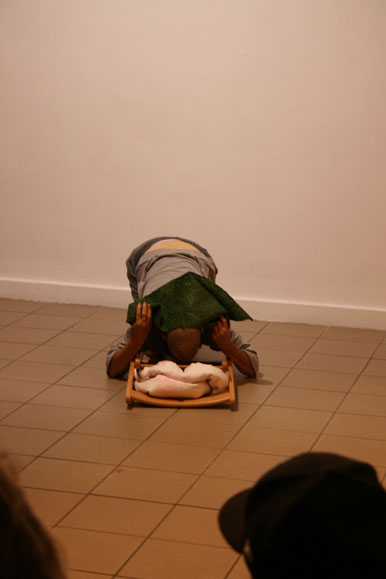









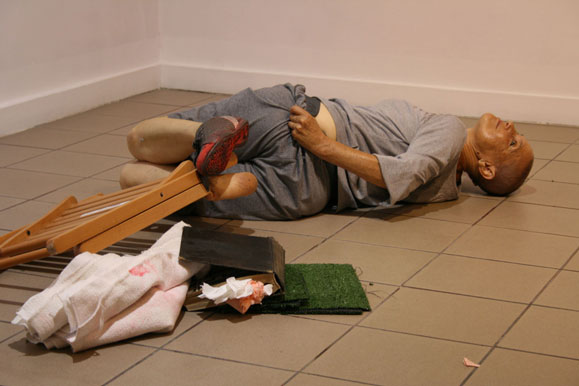






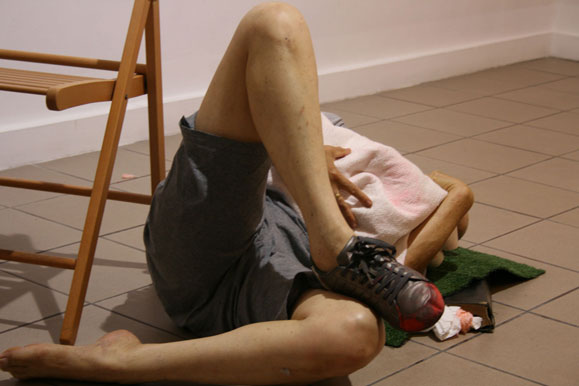













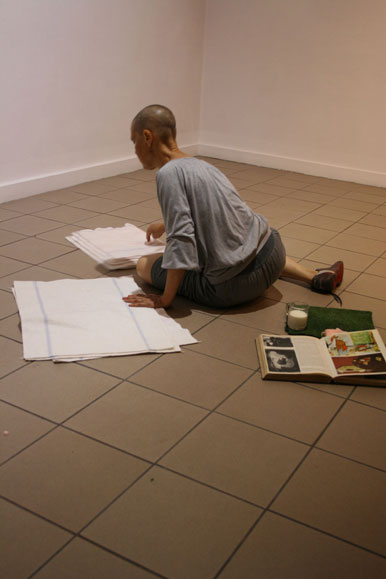
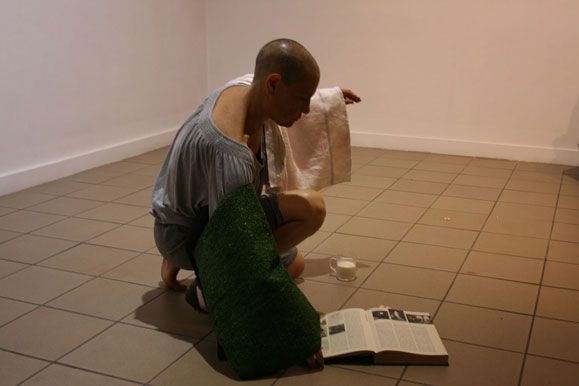












































Sacred
An era had come to an end. What had been our home was now disassembled; I had pushed the furniture aside, I dismantled the art, that he had made, from the walls, wrapped it in the towels I pulled off the racks, and leaned it, with care, by the walls of the room. I raveled the pottery, that he had made, carefully, inside the sheets I had undressed from our beds, to have it saved and cherished as I would him.
Danny was diagnosed with a brain tumor at the age of 55, which had been caused by his military service, 35 years earlier, when training as a diver in the polluted waters of HaKishon river. When he was 61 years and 2 months old, after 6 years and 4 months of withstanding the inevitable, he was defeated.
The room where he once lay was now an empty space. Here was now a life-time enclosed, in sheets and towels, by the wall.
I began creating Sacred after the Shiva, the Jewish seven days of mourning, over Daniel Davis, my beloved.
These were the objects which I had felt were necessary in order to commence work on Sacred.
- A glass of milk, half full, from the nearly empty refrigerator.
- An art book, remained unpacked, given upon my graduation from high school.
- 8 white floor rags, with marks of red paint, and two blue embroidered lines along their sides.
- A patch of grass, 35 X 35 centimeters.
- A pumping vessel with red paint, wrapped in a white rag and connected to a tube, retrieved from a previous performance.
Each of the objects were representative of an essence or an essential element in my perception of life. The fact that the glass was not filled with milk, that the book contained an encyclopedia of art, that the floor rags looked like the Israeli flag, that the grass was not real but artificial, that the pumping vessel resembled an infant, or a small corpse, that the tube looked like an umbilical cord, that the red paint on the shoes and on the rags could in fact suggest works of art but also stains of blood – all had served as tactile imagery with which I had set out to compose situations that would provoke interpretations. Yet, I cannot go on to give a detailed account of any of the compositions, as could be expected when writing about a traditional performance. Still, I would like to render two reasons why a composition could not be described in words*, and with this explanation I could, in turn, facilitate your better understanding of what my ephemeral performance is about: 1) The flux, the sequence and momentum, of the evolving compositions, is very complex, since each composition, I had created, had been influenced by that which I had done before, and it had been affected by that which had evolved after. In addition are the changing rhythms of my movement, as well as the change in moods, gestures and behavior, and the audience, of course, and the atmosphere it sets. It would require a writer who is as accurate as a seismograph, which I am not, and I do not know the likes of, in order to contend and capture the dynamics of a performance. 2) If I would, despite all that I had just written, embark on a more explicit and detailed description of what I do in a performance, I would inevitably fall into the pit of self-analyses, when my intention had been to make the thoughts and reactions of the individual in the audience present. If I would color the reader`s mind with interpretations of my performances, then the actual event would be unnecessary and superfluous.
So, all that remains to be shared is the dire necessity of taking part in a live ephemeral performance. The tension of the performance was evoked in the symbolism of the relationships formed between the objects and the artist`s behavior, and the movement evolving in front of one`s eyes. In 2011, I wrote: “Sacred is a performance in which I am on the floor in front of you. I am she who arranges and inspects the relationship between the exalted and the downcast, the sacred and the profane in our reality”. Each performance is an opportunity, in real time and a space, to hold an intimate discourse and even question, that which we may hold as Sacred.
*The complexities of evolving the composition cannot be described in words but can better be described in photographed visual images.